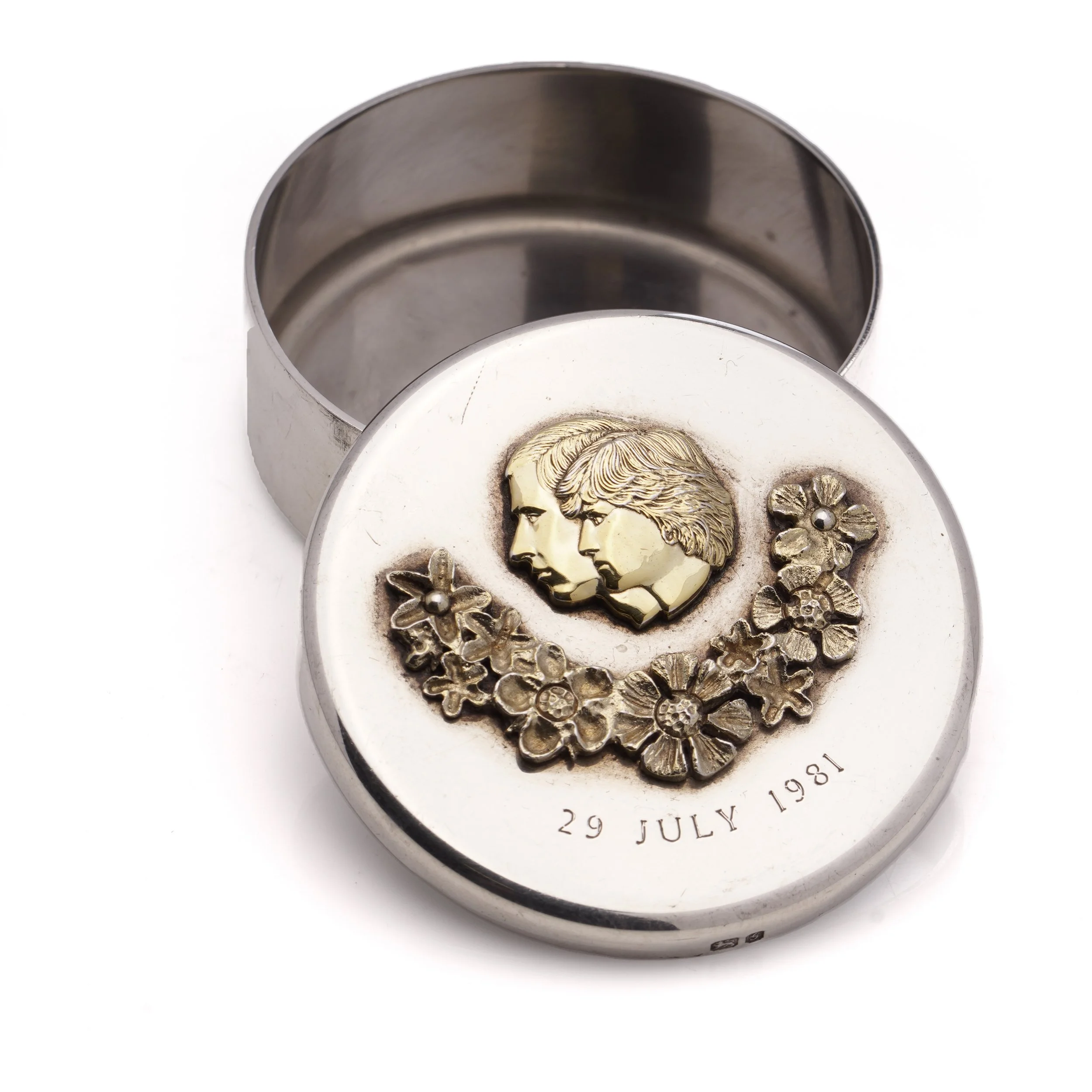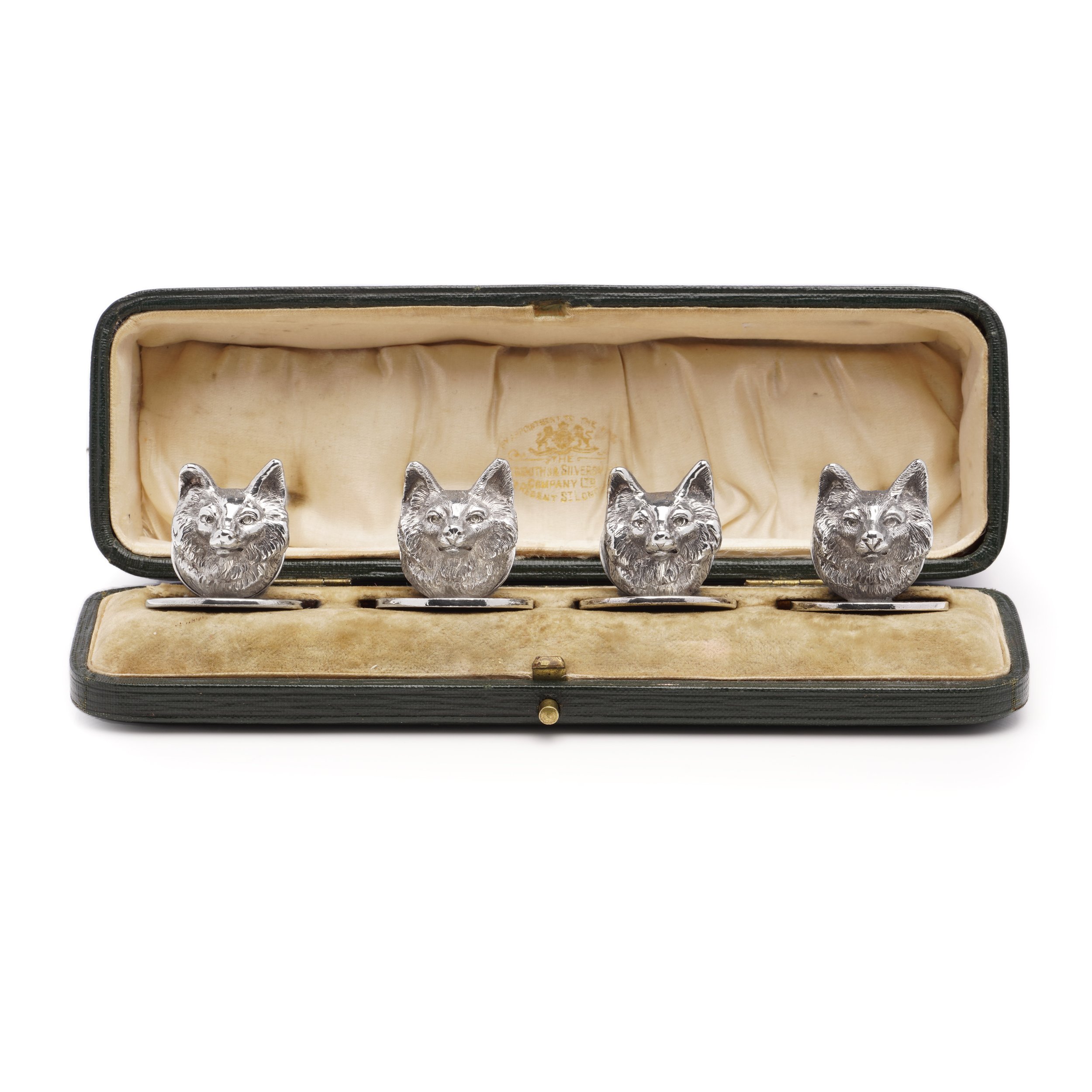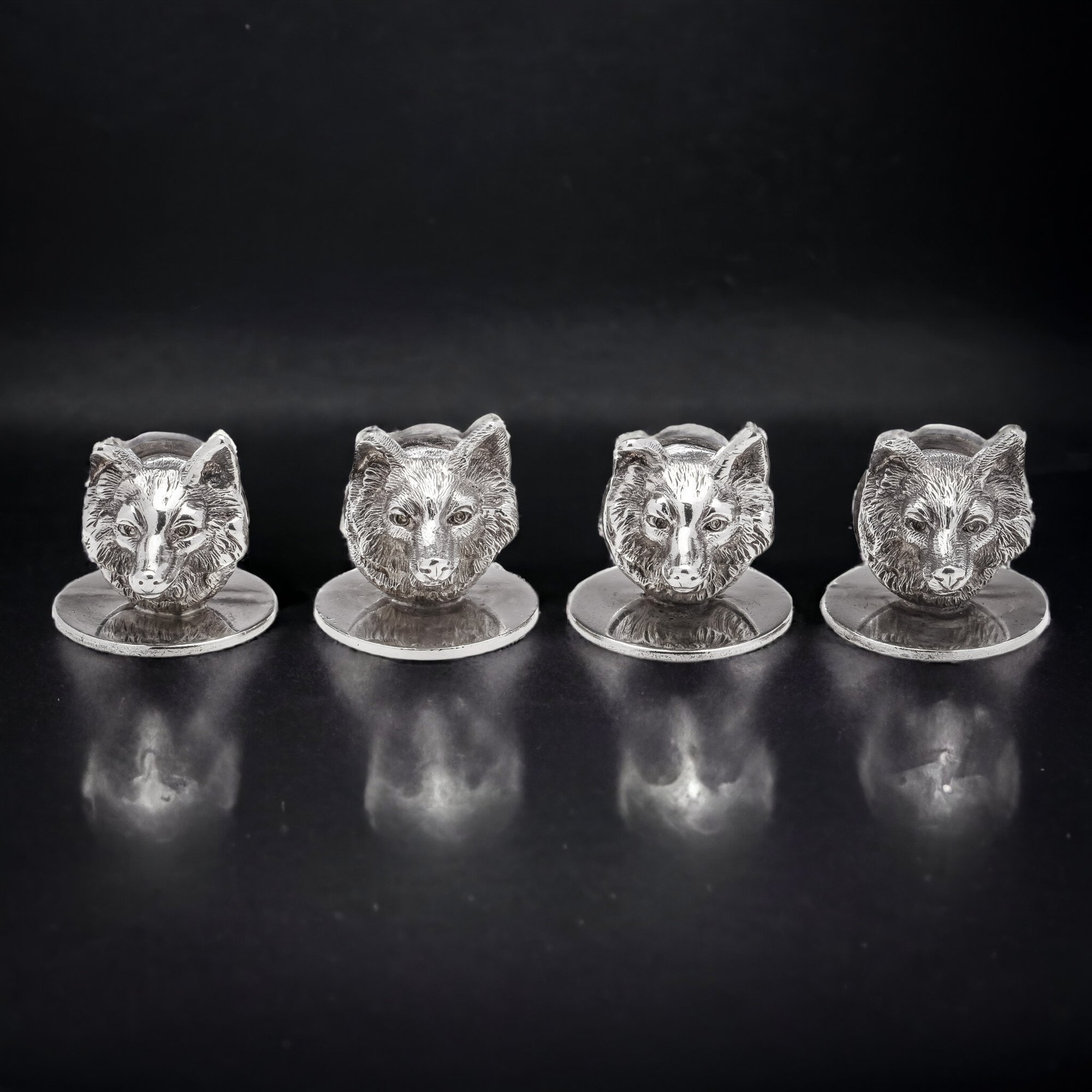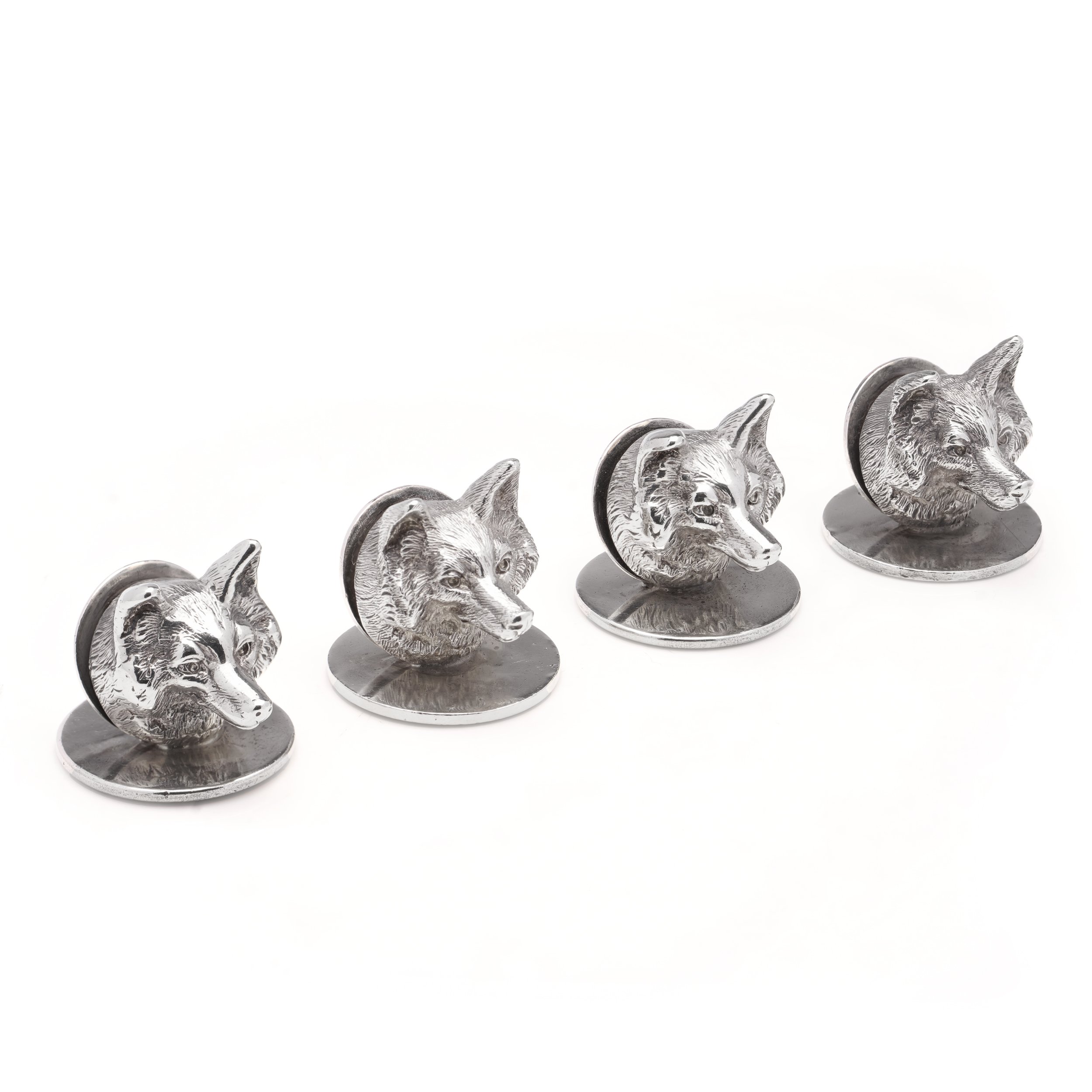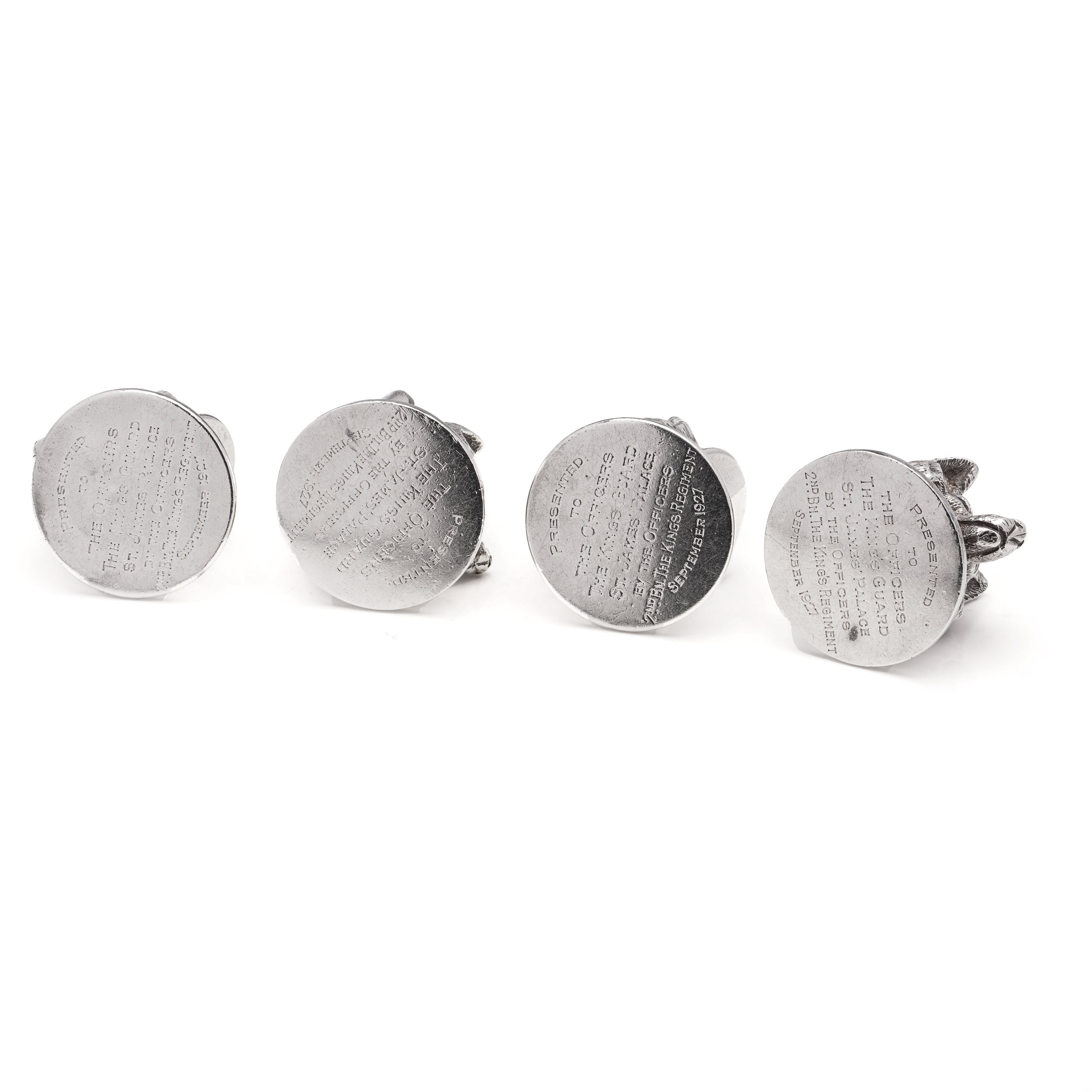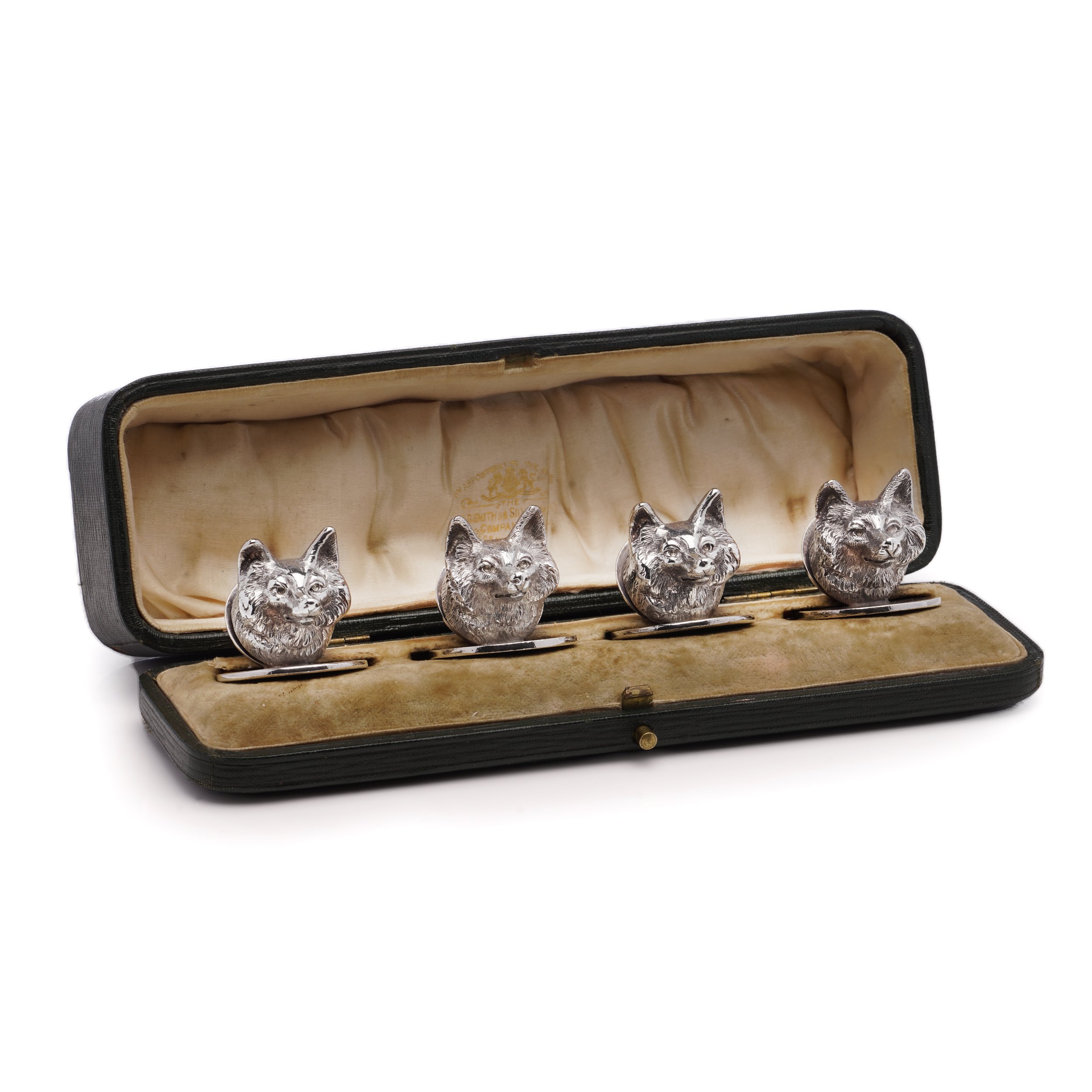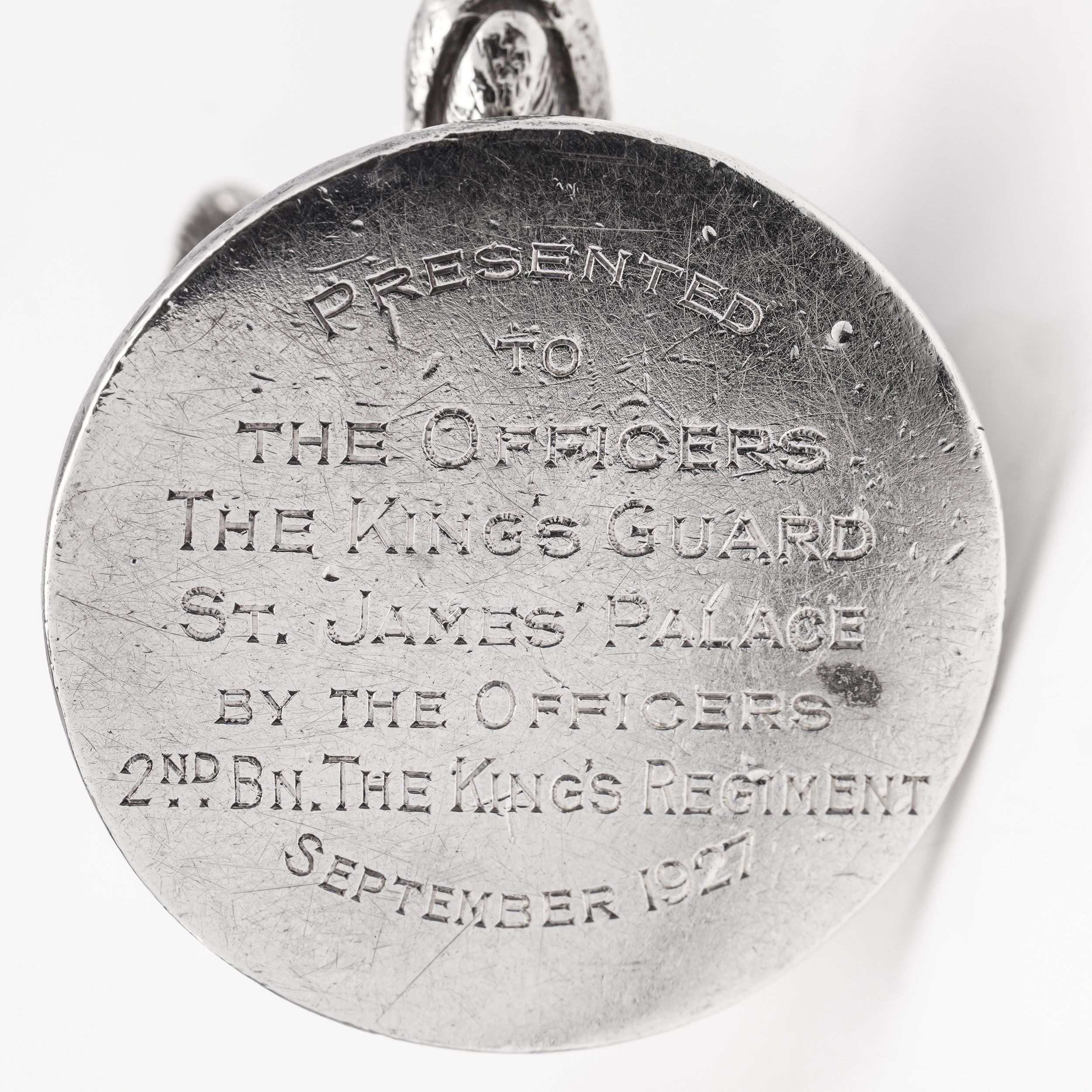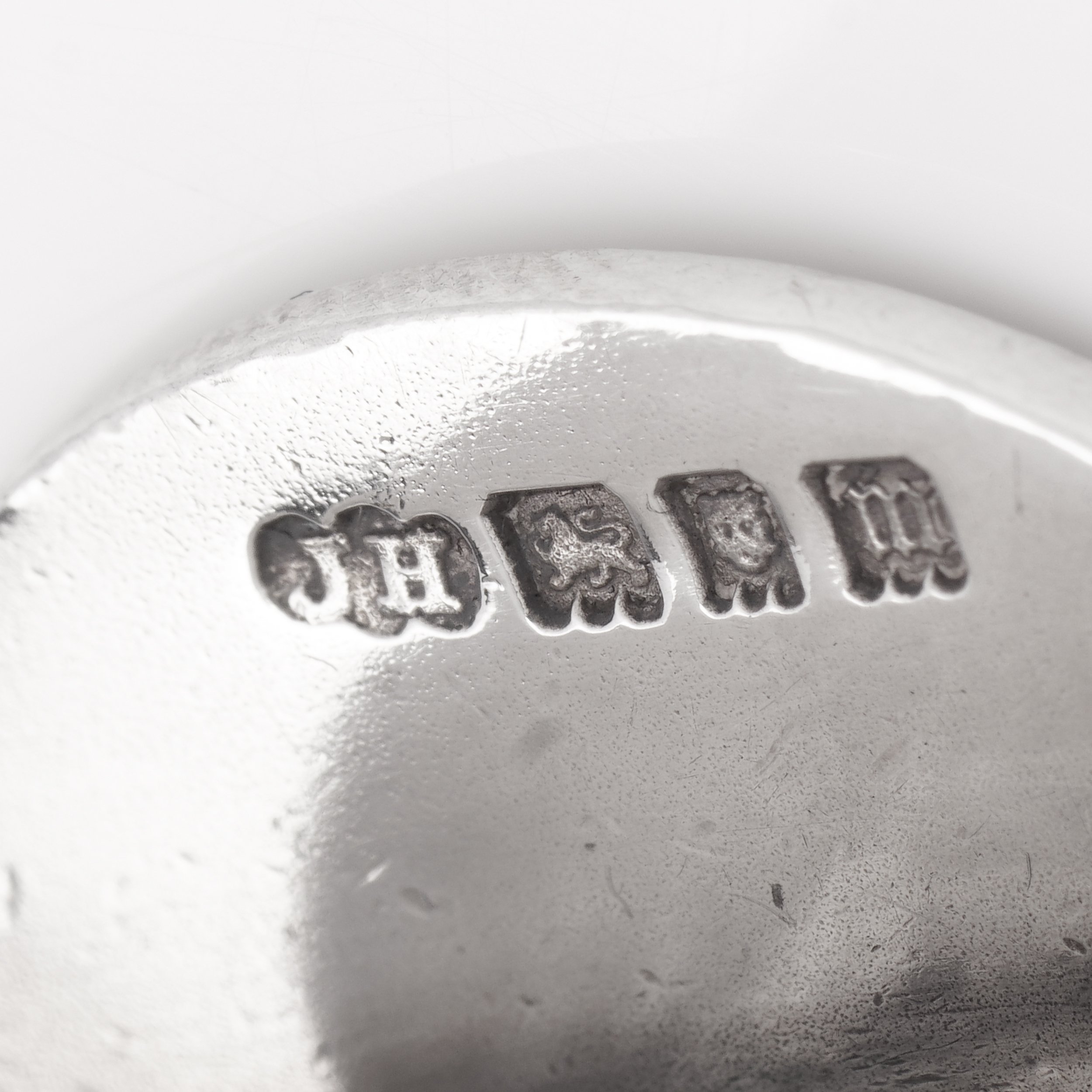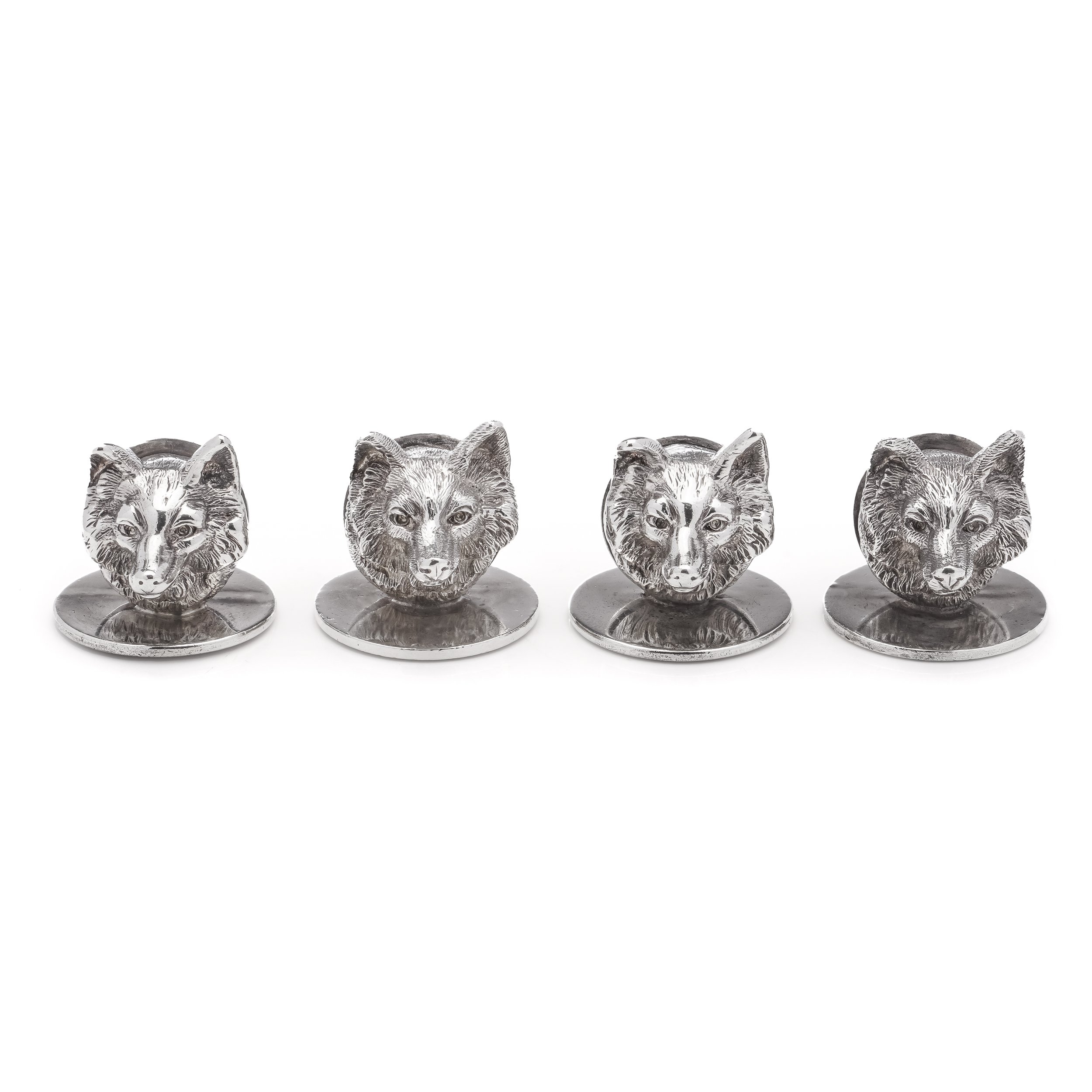17th century silver round circular patch box
Antique 17th-century sterling silver patch box, possibly Charles II era, featuring embossed Tudor Rose design. Hallmarked "I.F" inside, base marked "C.W," likely made in London circa 1680. Rare and historically significant piece of craftsmanship.
Antique 17th-century sterling silver patch box, possibly Charles II era, featuring embossed Tudor Rose design. Hallmarked "I.F" inside, base marked "C.W," likely made in London circa 1680. Rare and historically significant piece of craftsmanship.
Antique 17th-century sterling silver patch box, possibly Charles II era, featuring embossed Tudor Rose design. Hallmarked "I.F" inside, base marked "C.W," likely made in London circa 1680. Rare and historically significant piece of craftsmanship.
-
An antique round patch box, crafted in sterling silver during the 17th century, is potentially from the era of Charles II. The silver circular box and cover showcase embossing featuring a Tudor Rose within a bordered design. The interior is hallmarked with the maker's mark I.F, and the base bears the initial letters C.W. It was likely made in London around the 1680s.
-
Dimensions:
Diameter x height: 2.8 x 1.4 cm Weight: 6.9 gramsCondition: Minor signs of wear and tear, interior has blemishes, otherwise good condition overall.
-
ITEM LOCATION : United Kingdom
SHIPPING FEE: Complimentary Express & Insured Shipping
INCLUDED: Complimentary Gift Wrap Packaging & Certificate of Evaluation.
RETURNS: 14-Days Return Policy, Money-Back Guarantee. -
Patch boxes, popularized during the 17th century, held significant cultural and historical relevance. These small, often round, containers were crafted to store small patches or beauty spots, which were fashionable accessories worn by both men and women during this era. Patches were made from silk or velvet and were applied to the face to cover blemishes or enhance facial features. The 17th century was marked by an increased focus on personal grooming and beauty, and patch boxes became essential accessories for those seeking to adhere to contemporary fashion standards.
The Tudor Rose, a prominent symbol embossed on many patch boxes from this period, carried special significance. The Tudor Rose is a combination of the white rose of York and the red rose of Lancaster, symbolizing the union of the two warring houses during the Wars of the Roses, which ended with the establishment of the Tudor dynasty. As a symbol of unity and peace, the Tudor Rose was adopted by the Tudor monarchs, including Henry VII and Elizabeth I.
In the context of patch boxes, the Tudor Rose served as a decorative motif, adding a touch of elegance and historical significance to these accessories. It not only reflected the wearer's adherence to fashion but also conveyed a connection to the rich political history of England during the Tudor era. The combination of practicality in storing beauty patches and the incorporation of symbolic elements made patch boxes both functional and fashionable, contributing to their popularity in the 17th century.












